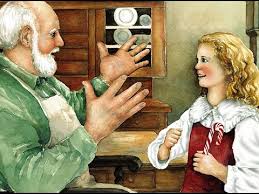
The Legend of the Candy Cane
An elementary school teacher in Elkhorn, Nebraska banned teachers from using candy canes in the classroom because they are in the shape of a “J”, which she believes stands for Jesus. She also banned all other items she deemed to be religious including the colors red and green in any classroom decorations. She had her facts correct on the legend but her over- zealous political correctness seemed to cross the line, resulting in the school district placing her on administrative leave.

The first record of the candy cane is in 1670 in Cologne, Germany. The choirmaster at Cologne Cathedral wishing to remedy the noise caused by the children in his church during the long Living Creche tradition of Christmas Eve, asked a local candy maker for some “sugar sticks” for them. In order to justify the practice of giving children candy during worship services, he asked the candy maker to add a crook to the top of each stick, which would remind the children of the shepherds that visited the baby Jesus.
There are several other versions of how the candy cane came to be used at Christmas time other many various places and dates suggested as to how the stripes were added. I’ll share my favorite:

As Christians we need to retell the stories and legends behind the symbols we use to celebrate Christmas. The tree is evergreen, symbolizing everlasting life. We light candles because Jesus is the Light of the World. Our wreaths symbolize God who has no beginning or end. The Nativity scene reminds us how God came humbly down to earth as a baby so we wouldn’t be afraid to approach Him. All of our senses are employed; sight, sound, smell and touch, to celebrate and praise God. The Principle did have it right; the candy cane does stand for JESUS. Merry Christmas!


Living in Gratitude

Joy of the Shepherds
You May Also Like

Seasons Change But God Never Changes
August 30, 2024
What Does the Bible Say About Government and Politics?
October 24, 2024
